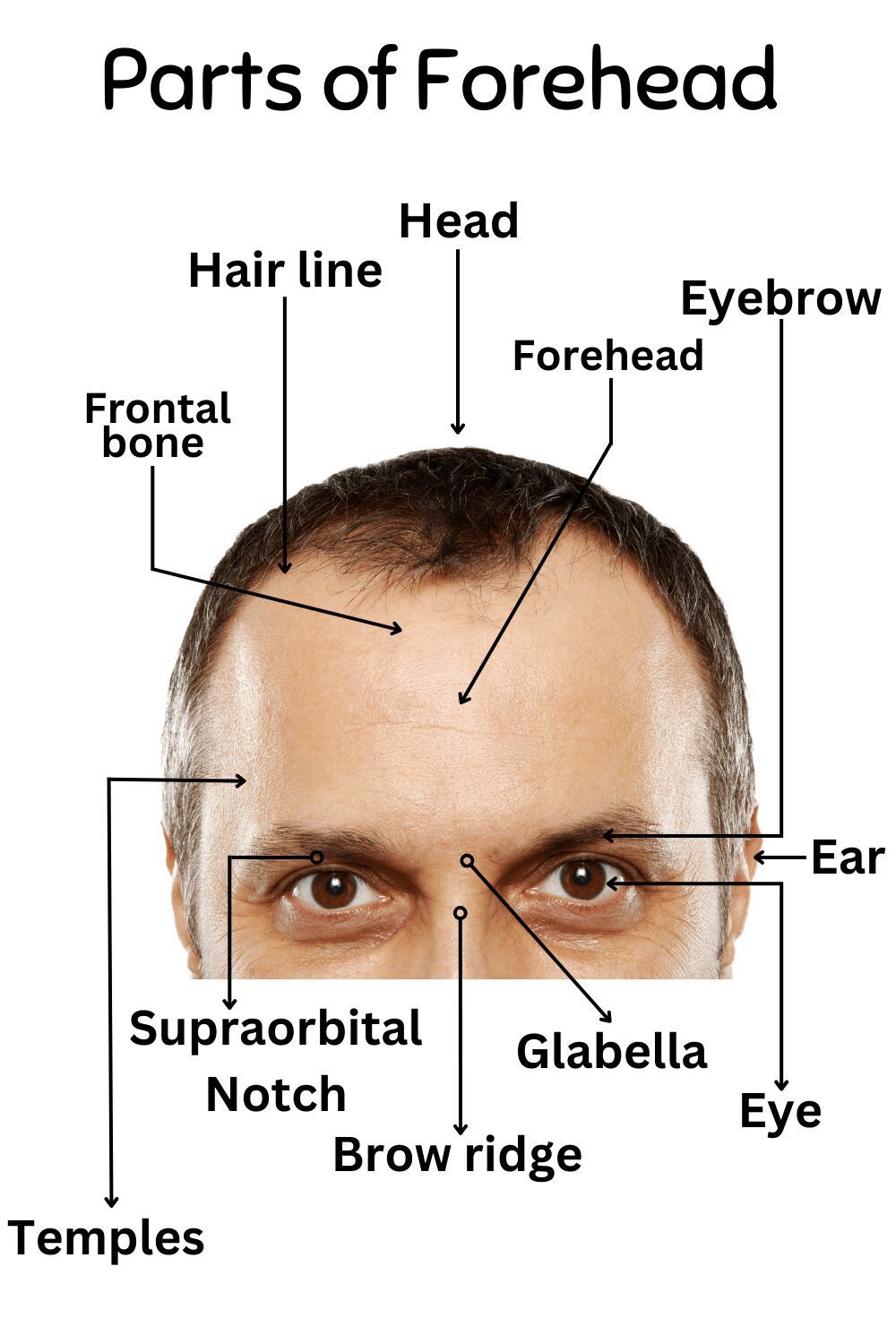Contents
The human forehead is a crucial part of the face, contributing to both our appearance and our facial expressions. While it may seem simple at first glance, the forehead is composed of several parts that each serve specific functions. Understanding the parts of the forehead and their roles can give us deeper insights into facial anatomy and its importance in communication and protection.
What Is the Forehead?
The forehead is the region of the face located above the eyes and below the hairline. It extends laterally to the temples and is a significant part of facial anatomy. The forehead plays a key role in protecting the brain, allowing facial expressions, and even contributing to the overall aesthetics of the face.
Parts of the Forehead
The forehead consists of several bones, muscles, and tissues that work together to perform various functions. Let’s explore each part in detail.
- Frontal Bone: The frontal bone is the primary bone of the forehead. It is a single, thick bone that forms the front part of the skull. The frontal bone serves to protect the brain’s frontal lobe and support the structure of the forehead and upper eye sockets.
- Frontal Eminences: These are the rounded elevations on either side of the forehead. The frontal eminences are typically more prominent in children and may be less noticeable in adults. They contribute to the shape and contour of the forehead.
- Superciliary Arches: The superciliary arches are the bony ridges located just above the eyebrows. These arches provide structural support to the forehead and protect the eyes from physical impact. They also play a role in facial expressions, especially those involving the movement of the eyebrows.
- Glabella: The glabella is the smooth area of the forehead between the eyebrows. It is a key landmark in facial anatomy and is involved in various facial expressions, such as frowning. The glabella is also used as a reference point in some medical and cosmetic procedures.
- Frontal Sinuses: Located within the frontal bone, the frontal sinuses are air-filled cavities that help reduce the weight of the skull, humidify the air we breathe, and enhance our voices. The sinuses also play a role in protecting the brain by absorbing some of the impact in case of trauma.

Muscles of the Forehead
The muscles in the forehead are responsible for controlling facial expressions and movements. These muscles are crucial for non-verbal communication and play a significant role in how we express emotions.
- Frontalis Muscle: The frontalis muscle is the main muscle of the forehead. It is a broad, flat muscle that extends from the hairline to the eyebrows. The frontalis muscle allows us to raise our eyebrows, wrinkle our forehead, and express emotions such as surprise or concern.
- Corrugator Supercilii: The corrugator supercilii is a small, narrow muscle located beneath the frontalis muscle. It is responsible for drawing the eyebrows together, creating vertical lines between the eyebrows. This muscle is often associated with frowning and expressions of worry or concentration.
- Procerus Muscle: The procerus muscle is a small muscle located between the eyebrows and extending downward along the bridge of the nose. It helps pull the skin of the forehead downward, contributing to expressions of anger or disdain.
Functions of the Forehead
The forehead plays several important roles in the human body, ranging from protection to communication.
- Protection: The thick frontal bone of the forehead provides a sturdy shield for the frontal lobe of the brain. This protection is crucial, as the frontal lobe is responsible for higher cognitive functions, such as decision-making, problem-solving, and controlling behavior.
- Facial Expressions: The muscles of the forehead allow for a wide range of facial expressions, which are essential for non-verbal communication. Whether we are raising our eyebrows in surprise or furrowing them in concentration, the forehead muscles help convey our emotions to others.
- Aesthetic Balance: The forehead contributes to the overall balance and symmetry of the face. Its shape, size, and contour play a significant role in defining the face’s aesthetics. A well-proportioned forehead is often considered a sign of beauty and harmony in facial features.
- Sinus Function: The frontal sinuses within the forehead help in reducing the weight of the skull, filtering and humidifying the air we breathe, and enhancing our voice resonance. They also provide some protection to the brain by absorbing impact during head trauma.
Conclusion
Understanding the parts of the forehead and their functions can enhance our appreciation of this essential facial feature. From protecting the brain to allowing a wide range of facial expressions, the forehead plays a vital role in both our physical and emotional well-being. By exploring its anatomy, we gain insights into how our bodies are designed to support and express who we are.
FAQs:
The forehead itself is a part of the face, and while it doesn’t have many “body parts” specifically, here are the areas and structures related to it:
1. Frontal Bone: The bone that forms the forehead.
2. Hairline: The edge where the forehead meets the hair.
3. Eyebrows: Located above the eyes, they sit on the brow ridge.
4. Glabella: The smooth area between the eyebrows.
5. Brow Ridge: The bony area above the eyes, just under the eyebrows.
6. Temples: The area on the sides of the forehead, near the ears.
These are the key body parts and areas connected to the forehead!
There are four types of foreheads:
1. High Forehead: A tall forehead, with a higher hairline.
2. Low Forehead: A shorter forehead, with the hairline close to the eyebrows.
3. Flat Forehead: A forehead that looks straight and even.
4. Rounded Forehead: A forehead with a smooth, curved shape.
These are just different shapes of the forehead!
The name of the forehead is the frontal region. It is also referred to as the frontal area of the face, named after the frontal bone that forms it.
You May Also Like








